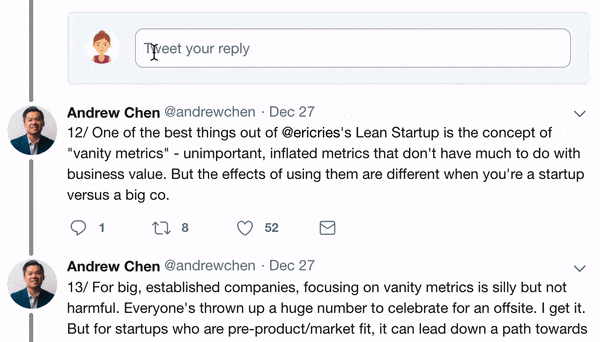
1/Trade Planning Part 3 - Setups
Reminder, here's the 4 parts of any trade:
edge -> setup -> trade plan -> execution.
If you missed the section on execution or trade planning, check out my history.
Reminder, here's the 4 parts of any trade:
edge -> setup -> trade plan -> execution.
If you missed the section on execution or trade planning, check out my history.
2/A setup is a scenario when you recognize your edge exists and there is enough liquidity to formulate a trade plan. For example, in my "overvixing" metric, when VIX deviates from the regression by enough, there is a setup.
3/I hear the word setup a lot in technical trading circles. “I see a possible 1-2, i-ii, I-II setup and the market will go up for 3 years straight.” or “I see a bull flag that above price X, this will extend to Y.” IMO, these are not setups.
4/They are trade plans that demonstrate a deficiency in setup. The reason is most technical traders create an opaque edge that cannot be proven or disproven. Their edge mostly boils down to “Humans have similar aggregate behavior patterns, and they never change from history”...
5/When plenty of studies from poker to behavioral finance have proven the opposite. Humans act more randomly than you would expect.
So why do some technical traders actually succeed? It is because sometimes their edge actually does exist, they just do not recognize it.
So why do some technical traders actually succeed? It is because sometimes their edge actually does exist, they just do not recognize it.
6/For instance, maybe the edge is front-running fund rebalancing because those funds are very calculated in what they are doing, the technical trader could be tripping into an edge they do not recognize (maybe with bond/equity ratios front-running risk parity rebalance).
7/Since this a third order deficiency, a trader can succeed for a while before the market turns against them and they fail, but that failure is ultimately from an underlying fundamental shift and not because human behavior suddenly changed. (e.g. risk parity loses popularity)
8/The holy grail of traders is a setup that persists with edge, but that is impossible, and technical traders need to acknowledge that. If it did, it is eventually overexploited and ceases to exist. Really a trader's life is chasing edge wherever we can find it until it is gone.
9/The same is true with "income" options strategies. Sure, there is VRP, but when that VRP is too low for the risk assumed, those income strategies shouldn't be used. But they trade at the appointed time regardless, and put themselves in danger.
10/An excess in setup is waiting for too many variables within the edge to make a trade. For instance, when P/E is equal to 10, you buy the stock because it is undervalued is the edge (an overexploited edge that no longer works) and you see a setup in a crashed stock.
11/But that alone isn't good enough to buy that stock, its cash flow must be positive by 2.4X its interest on debt payments, it must have revenue growth of 50% over the past 5 years, etc. Again, just get a money market and call it a life.
• • •
Missing some Tweet in this thread? You can try to
force a refresh




